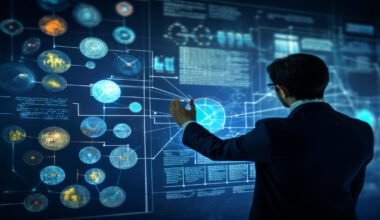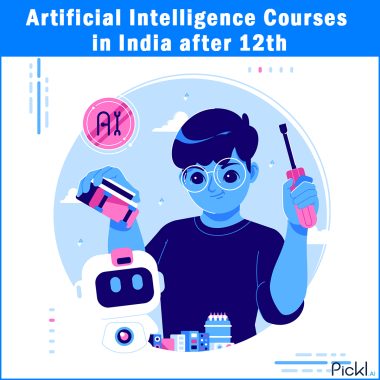Summary: The history of Artificial Intelligence spans from ancient philosophical ideas to modern technological advancements. Key milestones include the Turing Test, the Dartmouth Conference, and breakthroughs in machine learning. This journey reflects the evolving understanding of intelligence and the transformative impact AI has on various industries and society as a whole.
Introduction
Artificial Intelligence (AI) has evolved from theoretical concepts to a transformative force in technology and society. This blog explores the rich history of AI, tracing its origins, key developments, and challenges over the decades. From early philosophical musings to modern-day applications, understanding AI’s journey provides insight into its future potential.
Early Concepts and Foundations
Ancient myths and philosophical inquiries about intelligence and consciousness trace back the roots of Artificial Intelligence. Early thinkers like Aristotle pondered the principles of reasoning, while the invention of formal logic laid the groundwork for computational theories.
In the 20th century, mathematicians and logicians such as George Boole and Kurt Gödel contributed significantly to the formalisation of logic and computation.
The pivotal moment in AI’s history occurred with the work of Alan Turing in the 1930s and 1940s. Turing proposed the concept of a “universal machine,” capable of simulating any algorithmic process.
His 1950 paper, “Computing Machinery and Intelligence,” introduced the Turing Test, a criterion for determining whether machines can exhibit intelligent behaviour indistinguishable from that of humans. These foundational ideas set the stage for the emergence of AI as a distinct field of study.
The Birth of AI as a Field (1950s-1960s)
The formal establishment of AI as a field occurred in 1956 during a workshop at Dartmouth College, organized by John McCarthy, Marvin Minsky, Nathaniel Rochester, and Claude Shannon.
This conference marked the first time researchers gathered to discuss the potential of machines to simulate human intelligence. Researchers coined the term “Artificial Intelligence” during this event, laying the groundwork for future research.
In the following years, researchers made significant progress. Early AI programs, such as the Logic Theorist developed by Allen Newell and Herbert A. Simon, demonstrated the ability to prove mathematical theorems.
The development of LISP by John McCarthy became the programming language of choice for AI research, enabling the creation of more sophisticated algorithms. During this period, optimism about AI’s potential led to substantial funding and research initiatives.
The Golden Age of AI (1960s-1970s)
Experts often refer to the 1960s and 1970s as the “Golden Age of AI.” During this time, researchers made remarkable strides in natural language processing, robotics, and expert systems. Notable achievements included the development of ELIZA, an early natural language processing program created by Joseph Weizenbaum, which simulated human conversation.
This period also saw the introduction of the first expert systems, such as DENDRAL and MYCIN, which applied AI to specific domains like chemistry and medicine.
Despite these advancements, the limitations of early AI systems became apparent. Many programs relied heavily on symbolic reasoning and lacked the ability to learn from experience. As a result, the initial enthusiasm began to wane, leading to a decline in funding and interest in AI research.
The AI Winter (1970s-1980s)
The late 1970s and early 1980s marked a challenging period known as the “AI Winter.” This term refers to the significant reduction in funding and interest in AI research due to unmet expectations. Critics, including British mathematician James Lighthill, highlighted the limitations of AI systems, arguing that they had failed to deliver on their promises.
During this time, many abandoned AI projects faced skepticism from both the public and funding agencies. The lack of practical applications and the inability of AI systems to handle complex, real-world problems contributed to the decline in enthusiasm for the field.
The Resurgence of AI (1980s-1990s)
The late 1980s and 1990s saw a resurgence of interest in AI, driven by several factors. The development of more powerful computers and advances in algorithms revitalised the field.
Researchers began to focus on Machine Learning, a subfield of AI that emphasises the importance of data-driven approaches. This shift allowed systems to learn from experience and improve their performance over time.
Expert systems also experienced a revival during this period, with companies investing in AI technologies to enhance decision-making processes. Notable examples include the success of the expert system XCON, which helped configure orders for computer systems at Digital Equipment Corporation.
The combination of increased computational power and innovative algorithms laid the foundation for the next wave of AI advancements.
AI in the 21st Century
The 21st century has witnessed an unprecedented boom in AI research and applications. The advent of big data, coupled with advancements in Machine Learning and deep learning, has transformed the landscape of AI.
Techniques such as neural networks, particularly deep learning, have enabled significant breakthroughs in image and speech recognition, natural language processing, and autonomous systems.
In 2011, IBM’s Watson gained fame by winning the quiz show “Jeopardy!” against human champions, showcasing the capabilities of AI in understanding and processing natural language.
The development of self-driving cars, virtual assistants like Siri and Alexa, and AI-powered recommendation systems further exemplifies the growing integration of AI into everyday life.
Modern AI Applications
Today, AI is pervasive across various industries, revolutionising how businesses operate and interact with customers. Key applications include:
Healthcare: AI improves patient outcomes and streamlines processes in diagnostics, personalized medicine, and drug discovery.
Finance: AI algorithms analyse market trends, detect fraud, and assist in algorithmic trading, enhancing decision-making in financial services.
Transportation: Autonomous vehicles leverage AI for navigation, obstacle detection, and route optimization, promising safer and more efficient transportation systems.
Retail: AI-driven recommendation engines enhance customer experiences by personalising product suggestions based on user behaviour and preferences.
Manufacturing: AI optimises supply chain management, predictive maintenance, and quality control, increasing efficiency and reducing costs.
Future Directions and Challenges
While AI has made remarkable progress, several challenges remain. Ethical considerations surrounding AI, including bias in algorithms, data privacy, and accountability, are critical issues that need addressing. As AI systems become more autonomous, ensuring transparency and fairness in decision-making processes is paramount.
Additionally, the potential for job displacement due to automation raises concerns about the future of work. Policymakers, educators, and industry leaders must collaborate to develop strategies that promote workforce adaptability and reskilling.
The future of AI also holds exciting possibilities, including advancements in general Artificial Intelligence (AGI), which aims to create machines capable of understanding and learning any intellectual task that a human can perform.
Continued research in areas such as explainable AI, reinforcement learning, and human-AI collaboration will shape the trajectory of AI in the coming years.
Read More: Top 10 AI Jobs and the Skills to Lead You There in 2024
Timeline of the History of Artificial Intelligence (AI)
This timeline encapsulates the significant milestones in the history of Artificial Intelligence, illustrating its evolution from theoretical concepts to practical applications that shape our modern world.
1940s-1950s: Foundations of AI
1943: Warren McCulloch and Walter Pitts design the first artificial neurons, laying the groundwork for neural networks.
1950: Alan Turing publishes “Computing Machinery and Intelligence,” introducing the Turing Test to evaluate machine intelligence.
1956: John McCarthy, Marvin Minsky, Nathaniel Rochester, and Claude Shannon organized the Dartmouth Conference, marking the official birth of AI as a field and coining the term “Artificial Intelligence.”
1960s-1970s: Early Development
1965: Joseph Weizenbaum develops ELIZA, an early natural language processing program that simulates human conversation.
1972: The expert system DENDRAL is created, demonstrating the capabilities of rule-based systems and domain expertise in AI.
1980s: AI Winter and Expert Systems
1980: The first National Conference on Artificial Intelligence is held, despite a decline in funding and interest in AI research, marking the beginning of the “AI Winter.”
1986: A resurgence in neural networks occurs with the introduction of the backpropagation algorithm, revitalising AI research.
1990s: Revival and Emergence of Machine Learning
1996: The LOOM project is initiated, focusing on knowledge representation and setting the stage for future generative AI advancements.
1997: IBM’s Deep Blue defeats world chess champion Garry Kasparov, symbolising a significant milestone in AI’s strategic capabilities.
2000s: The Genesis of Generative AI
2000: The Kismet project at MIT is developed, creating a social robot capable of recognizing and simulating human emotions.
2004: Discussions about Generative Adversarial Networks (GANs) begin, signalling the start of a new era in AI.
2011: IBM Watson defeats Ken Jennings on the quiz show “Jeopardy!”, showcasing advancements in natural language processing and AI’s ability to understand complex queries.
2010s: Rapid Advancements and Applications
2012: The ImageNet competition demonstrates the power of deep learning, with AlexNet winning and significantly improving image classification accuracy.
2016: AlphaGo, developed by DeepMind, defeats Go champion Lee Sedol, highlighting AI’s capabilities in complex strategic games.
2018: OpenAI releases the first version of GPT (Generative Pre-trained Transformer), revolutionising natural language processing and generation.
2020s: The Rise of Generative AI
2020: GPT-3 is released, showcasing unprecedented capabilities in text generation and understanding.
2022: The advent of AI tools like DALL-E and Midjourney demonstrates AI’s ability to create images from textual descriptions, further expanding the scope of generative AI.
2023: AI continues to evolve with advancements in ethical considerations, regulatory frameworks, and applications across various industries, including healthcare, finance, and entertainment.
Conclusion
The history of Artificial Intelligence is a testament to human ingenuity and the relentless pursuit of knowledge. From its philosophical origins to modern-day applications, AI has transformed industries and continues to shape our world.
As we navigate the challenges and opportunities that lie ahead, understanding AI’s history provides valuable insights into its future potential.
Frequently Asked Questions
Who is Considered the Father of Artificial Intelligence?
John McCarthy is often referred to as the father of Artificial Intelligence for coining the term “Artificial Intelligence” and organising the Dartmouth Conference in 1956, which laid the foundation for AI research.
What Caused the AI Winter?
The AI Winter was caused by a combination of unmet expectations, criticism of AI’s limitations, and a lack of practical applications. Funding and interest in AI research declined significantly during this period.
How is AI Used in Everyday Life?
AI is used in various everyday applications, including virtual assistants, recommendation systems, autonomous vehicles, and healthcare diagnostics. Its integration into daily life continues to grow as technology advances.



